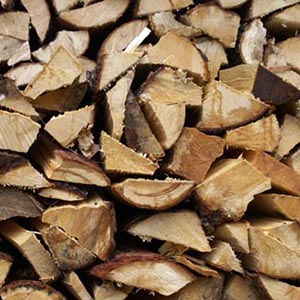Solid tailings after supercritical CO2 extraction of lignocellulosic biomass as a source of quality biochar for energetic use and as soil improvement

Published: 21 June 2023
Abstract Views: 718
PDF: 143
HTML: 10
HTML: 10
Publisher's note
All claims expressed in this article are solely those of the authors and do not necessarily represent those of their affiliated organizations, or those of the publisher, the editors and the reviewers. Any product that may be evaluated in this article or claim that may be made by its manufacturer is not guaranteed or endorsed by the publisher.
All claims expressed in this article are solely those of the authors and do not necessarily represent those of their affiliated organizations, or those of the publisher, the editors and the reviewers. Any product that may be evaluated in this article or claim that may be made by its manufacturer is not guaranteed or endorsed by the publisher.
Similar Articles
- L. Pari, A. Assirelli, A. Suardi, V. Civitarese, A. Del Giudice, E. Santangelo, Seed losses during the harvesting of oilseed rape (Brassica napus L.) at on-farm scale , Journal of Agricultural Engineering: Vol. 44 No. s2 (2013): Proceedings of the 10th Conference of the Italian Society of Agricultural Engineering
- Claudia Arcidiacono, Simona M.C. Porto, LIFE CYCLE ASSESSMENT OF ARUNDO DONAX BIOMASS PRODUCTION IN A MEDITERRANEAN EXPERIMENTAL FIELD USING TREATED WASTEWATER , Journal of Agricultural Engineering: Vol. 42 No. 3 (2011)
- Angelo Fabbri, Chiara Cevoli, Estimation of semolina dough rheological parameters by inversion of a finite elements model , Journal of Agricultural Engineering: Vol. 46 No. 3 (2015)
- Samuel Kojo Ahorsu, Hayford Ofori, Jonathan Ampah, Ernest Kodzo Kumah, Maxwell Budu, Effect of variable chipping clearance and operational speed on the cassava chip geometry , Journal of Agricultural Engineering: Vol. 53 No. 2 (2022)
- Massimo Monti, Giuseppe Rossi, Stefano Simonini, Francesco Sorbetti Guerri, Matteo Barbari, Manually operated pile driver for use in the south Iraqi Marshlands , Journal of Agricultural Engineering: Vol. 44 No. s2 (2013): Proceedings of the 10th Conference of the Italian Society of Agricultural Engineering
- José F. Reyes, Elías Contreras, Christian Correa, Pedro Melin, Image analysis of real-time classification of cherry fruit from colour features , Journal of Agricultural Engineering: Vol. 52 No. 4 (2021)
- Ziyan Fan, Lijun Li, Zicheng Gao, Fuzzy neural network PID control design of camellia fruit vibration picking manipulator , Journal of Agricultural Engineering: Vol. 54 No. 2 (2023)
- Francesco da Borso, Alessandro Chiumenti, Marco Mezzadri, Francesco Teri, Noxious gases in rabbit housing systems: effects of cross and longitudinal ventilation , Journal of Agricultural Engineering: Vol. 47 No. 4 (2016)
- Stefano Melzi, Edoardo Sabbioni, Michele Vignati, Maurizio Cutini, Massimo Brambilla, Carlo Bisaglia, Eugenio Cavallo, Multibody model of fruit harvesting trucks: comparison with experimental data and rollover analysis , Journal of Agricultural Engineering: Vol. 49 No. 2 (2018)
- Vittorio Panaro, Simone Pescuzzi, Francesco Santoro, EVALUATION OF THE MICROCLIMATE DURING OLIVE OIL EXTRACTION OPERATIONS INSIDE OLIVE MILLS , Journal of Agricultural Engineering: Vol. 38 No. 2 (2007)
<< < 28 29 30 31 32 33 34 35 36 37 > >>
You may also start an advanced similarity search for this article.

 https://doi.org/10.4081/jae.2023.1344
https://doi.org/10.4081/jae.2023.1344







